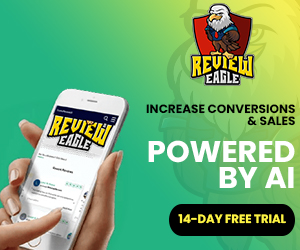This blog dives deep into the intricate psychological mechanisms that make storytelling a uniquely powerful tool in capturing and retaining audience attention. It explores how stories, more than just a sequence of events, resonate with us on a deeper level, engaging various areas of the brain and fostering a strong emotional connection. This blog will unravel why stories have the power to transport us, create empathy, and forge a bond between the storyteller and the listener,and highlighting the phenomenon of neural coupling. By delving into the science behind why our brains are wired to respond to narratives, this blog aims to provide insights into how effective storytelling can be leveraged in various domains, from marketing to education, to create impactful, memorable experiences that resonate with audiences on a profound level.
The Psychology Behind Storytelling: Why it Captivates Audiences
Storytelling has a profound impact on our minds and emotions. It taps into the fundamental aspects of human psychology, making it an incredibly powerful tool for capturing and holding the attention of audiences. When we hear a story, our brains become more engaged, and we are more likely to remember the information being presented to us.One reason storytelling is so effective is that it activates multiple areas of the brain. When we listen to a story, not only do the language processing parts of our brain light up, but any other area that would be active if we were actually experiencing the events in the story also becomes activated. This phenomenon is known as “neural coupling,” and it helps us create vivid mental images and immerse ourselves in the narrative.Additionally, storytelling triggers emotional responses in our brains. When we hear a compelling story, our brains release oxytocin, a hormone associated with empathy and bonding. This emotional connection makes us more likely to trust and relate to the storyteller or brand behind the story.
Crafting Compelling Narratives: Building a Story Arc for Your Content
To effectively engage your audience through storytelling, it’s essential to create a compelling narrative structure. A well-crafted story arc can captivate your audience from beginning to end, keeping them hooked until they reach your desired call-to-action.A typical story arc consists of several key elements:1. Introduction: Set the stage by introducing your audience to the main characters or concepts involved in your content marketing campaign. This section should pique their curiosity and establish a connection with their interests or pain points.2. Rising Action: Build tension and anticipation by presenting challenges or obstacles that your characters must overcome. This part of the narrative should keep your audience engaged and eager to see how things unfold.3. Climax: Reach a pivotal moment in your story where everything comes together or a significant revelation occurs. This is the point where your audience’s emotions are likely to be at their peak, so make sure to deliver a powerful and impactful message.4. Falling Action: Begin to wrap up your story by resolving conflicts or providing solutions to the challenges presented earlier. This section should offer closure and leave your audience with a sense of satisfaction or fulfillment.5. Conclusion: End your story with a clear call-to-action that aligns with your content marketing goals. Whether it’s encouraging readers to sign up for a newsletter, make a purchase, or share the story with others, ensure that your desired outcome is explicitly communicated.
Choosing the Right Characters: How to Make Them Relatable and Engaging
The characters in your storytelling play a crucial role in capturing and maintaining your audience’s attention. To make them relatable and engaging, consider the following tips:1. Develop well-rounded characters: Give your characters depth by providing them with unique personalities, motivations, and backstories. This will help your audience connect with them on an emotional level.2. Use real-life examples: Incorporate real people or case studies into your storytelling whenever possible. Authenticity adds credibility and makes it easier for your audience to relate to the experiences being shared.3. Appeal to emotions: Create characters that evoke strong emotions in your audience. Whether it’s empathy, admiration, or even frustration, tapping into these emotions will keep your readers invested in the story.
Creating Emotional Connections: Tapping into Your Audience’s Feelings
Emotional connections are at the heart of effective storytelling in content marketing. By understanding and tapping into the feelings of your target audience, you can create narratives that resonate deeply and leave a lasting impact.To establish emotional connections through storytelling:1. Identify common pain points: Understand the challenges or problems faced by your target audience and weave these into the narrative of your content marketing campaign. By addressing their pain points directly, you can evoke empathy and create a sense of understanding.2. Share personal stories: Incorporate personal anecdotes or testimonials that demonstrate how your brand or product has positively impacted the lives of real people. These stories humanize your brand and make it easier for your audience to connect with your message.3. Use sensory language: Engage your audience’s senses by using descriptive language that paints a vivid picture in their minds. By appealing to their senses, you can create a more immersive and memorable storytelling experience.
Using Visual Storytelling: Enhancing Your Content with Images and Videos
Visual storytelling is a powerful tool for capturing attention and conveying complex ideas in a digestible format. By incorporating images, videos, infographics, and other visual elements into your content marketing strategy, you can enhance the impact of your storytelling efforts.Visuals can:1. Evoke emotions: Images and videos have the power to evoke strong emotional responses in viewers. Whether it’s through captivating visuals or compelling narratives conveyed through video content, visual storytelling allows you to connect with your audience on a deeper level.2. Simplify complex concepts: Visuals can help simplify complex ideas or data by presenting them in a visually appealing and easy-to-understand format. Infographics, for example, can condense information into bite-sized visuals that are more likely to be shared and remembered by your audience.3. Increase engagement: Visual content tends to be more engaging than text alone. By incorporating visuals into your storytelling, you can capture the attention of busy online users who may otherwise skim over lengthy written content.
Incorporating Storytelling Techniques in Different Content Formats
Storytelling is not limited to written blog posts or articles; it can be incorporated into various content formats across different platforms. Here are some examples:1. Social media posts: Craft short narratives or share snippets of stories on social media platforms like Facebook, Instagram, or Twitter. Use captivating visuals and concise storytelling techniques to capture attention in a crowded social media landscape.2. Podcasts: Use the power of audio storytelling to engage your audience through podcasts. Share personal stories, interviews, or even fictional narratives that align with your content marketing goals.3. Video content: Leverage the visual and auditory elements of video to create compelling narratives. Whether it’s through brand storytelling videos, tutorials, or behind-the-scenes glimpses, video content can be a highly effective medium for engaging your audience.
The Power of Authenticity: How to Make Your Brand Story Genuine
Authenticity is key when it comes to storytelling in content marketing. Your audience can quickly detect insincerity or inauthentic narratives, which can undermine trust and engagement. To make your brand story genuine:1. Be transparent: Share the real experiences and challenges faced by your brand or team. Transparency builds trust and helps your audience connect with the human side of your business.2. Stay true to your values: Align your storytelling with the core values and mission of your brand. This consistency reinforces authenticity and strengthens the emotional connection between your audience and your message.3. Incorporate user-generated content: Showcase real stories from satisfied customers or clients who have had positive experiences with your brand. User-generated content adds credibility and demonstrates the genuine impact of your products or services.
Harnessing the Power of Storytelling in Social Media Marketing
Social media platforms provide an ideal space for incorporating storytelling into your content marketing strategy. Here are some tips for harnessing the power of storytelling in social media marketing:1. Use visual elements: Visuals are essential on social media platforms where attention spans are short. Incorporate eye-catching images, videos, or infographics that convey a compelling narrative within seconds.2. Craft concise narratives: Social media posts have character limits, so make every word count! Craft concise narratives that capture attention and leave readers wanting more.3. Encourage user participation: Use storytelling to encourage user participation and engagement on social media. Ask questions, invite users to share their own stories, or create interactive content that encourages your audience to become part of the narrative.
Analyzing the Success of Storytelling in Content Marketing Campaigns
To measure the success of your storytelling efforts in content marketing, it’s essential to track key metrics and analyze the impact of your narratives. Here are some metrics to consider:1. Engagement: Monitor metrics such as likes, comments, shares, and click-through rates to gauge how well your storytelling resonates with your audience.2. Conversion rates: Analyze how storytelling affects conversion rates by tracking metrics such as lead generation, sales, or sign-ups attributed to specific narratives or campaigns.3. Brand sentiment: Monitor social media mentions and sentiment analysis to understand how your storytelling efforts impact brand perception and customer sentiment.
Conclusion: Embrace the Power of Storytelling to Transform Your Content Strategy
Storytelling is a powerful tool that can elevate your content marketing strategy and captivate your audience like never before. By understanding the psychology behind storytelling, crafting compelling narratives, incorporating relatable characters, creating emotional connections, using visual elements effectively, and embracing authenticity across different content formats and social media platforms, you can harness the power of storytelling to engage your audience on a deeper level.Don’t underestimate the impact that a well-told story can have on your brand’s success. Embrace storytelling in your content marketing strategy today and watch as it transforms the way you connect with your audience and achieve your marketing goals.
The AI Web Agency is dedicated to helping our clients grow their business. Growth is the DNA and foundation of our focus in everything we provide to our clients. The AI Web Agency offers marketing services that make our client’s phones ring, their websites fill with visitors, and keeps their existing clients engaged. We deliver this growth both online and offline, to local businesses and national brands. We leverage the power of AI to provide precision personalized content delivered via Email, Web, and Social Media to help businesses grow.








